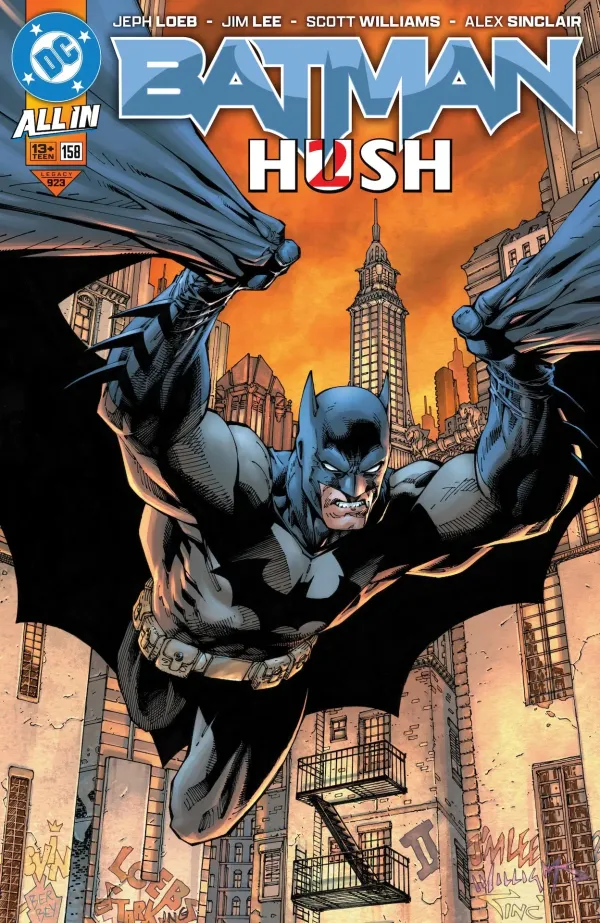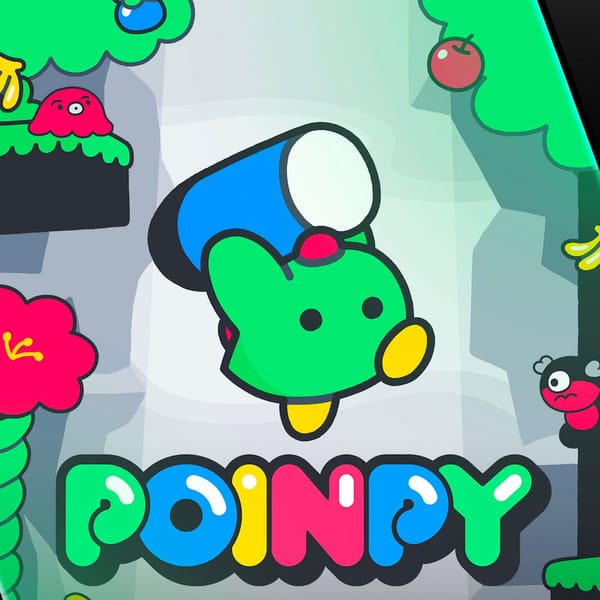Review : Witching Stone (Switch)
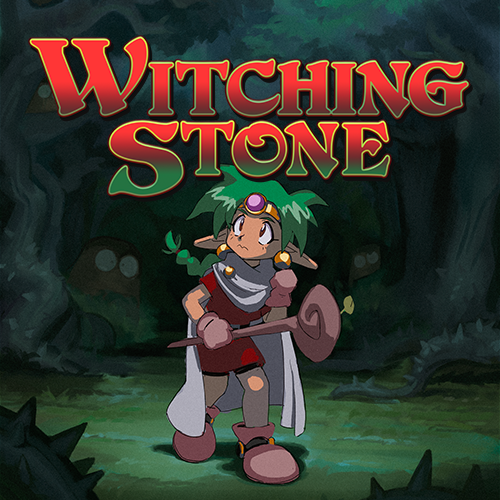
Disclaimer : I was given a review key for the Switch version of Witching Stone by lead developer Alexander Taylor (who also follows my Patreon), but I did pick up the game when it launched on PC out of pocket.
Roguelikes, deck-builders and especially roguelike deck-builders are commonplace in the indie games world these days : Slay the Spire, Balatro, I’m sure you can name one or two yourself. It can be hard to stand out from the crowd for any small developer, but all the more when you’re competing with some of the “biggest” indie games around. So what made this one stand out to me?
Sandwiched between segments of “Lorne Lanning” lamenting how the world is too odd for a new Oddworld in The Infinite Review’s “This Is E3” video was a trailer for a game where you draw lines between colourful stones to catch spells. The music was dramatic, the sound effects were chirpy and the art was a perfect fit, evoking 90s anime and manga. It’s name was Witching Stone.
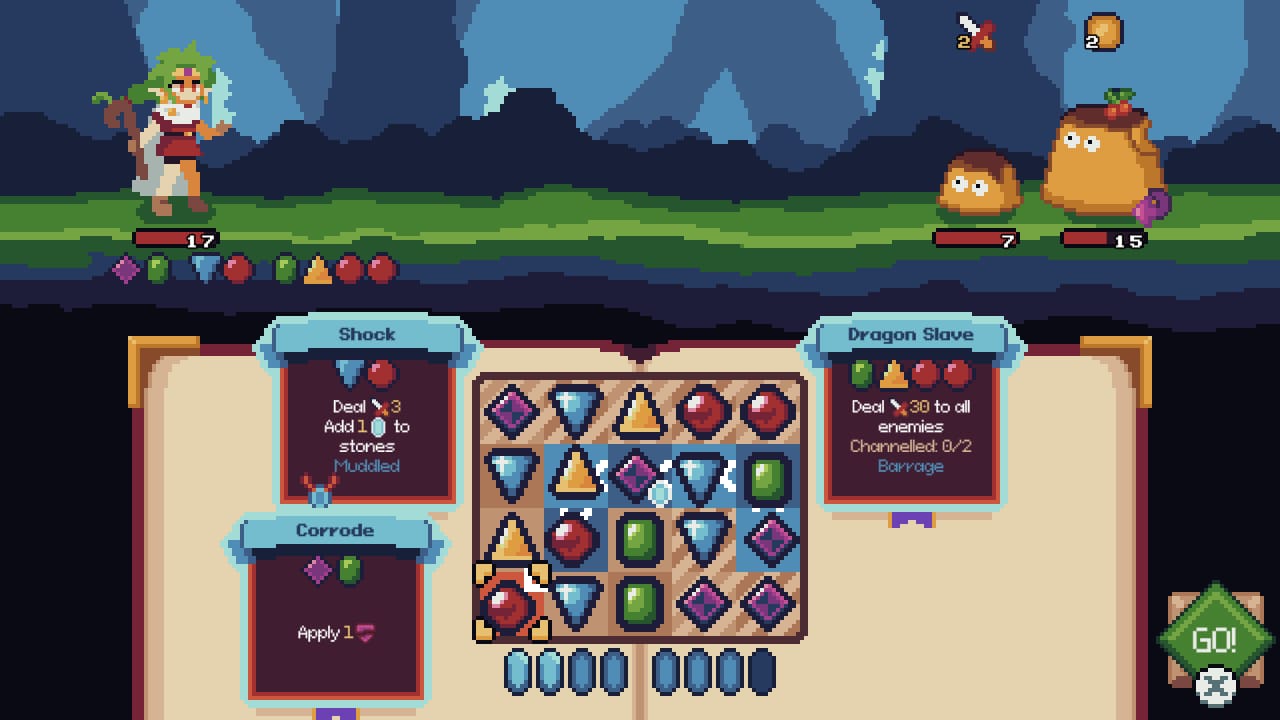
The bulk of the gameplay is in waging turn-based battles between your character and a horde of enemies. You connect lines of the titular stones that correspond with your spells to cast them, although you can also try to clear the board by linking up stones you don’t need. A lot of puzzlers like Puyo Puyo and Puzzles & Dragons demand you act fast, clearing as many lines as you can before your rivals can act. Witching Stone lets you take your time to draw up the perfect combination of spells and stones to deal the most damage you can, although this has led to me spending five minutes on turns later in the game as the right casting sequence can be the difference between life or death.
Between battles you wander a map dotted with encounters, chests, blessings and shops in any order you wish. If you’re low on health, you can avoid the hard encounters marked in red and heal up at a campfire. All you need to do to finish each act is reach and win the boss battle, so don’t feel obligated to take on fights you can’t handle.
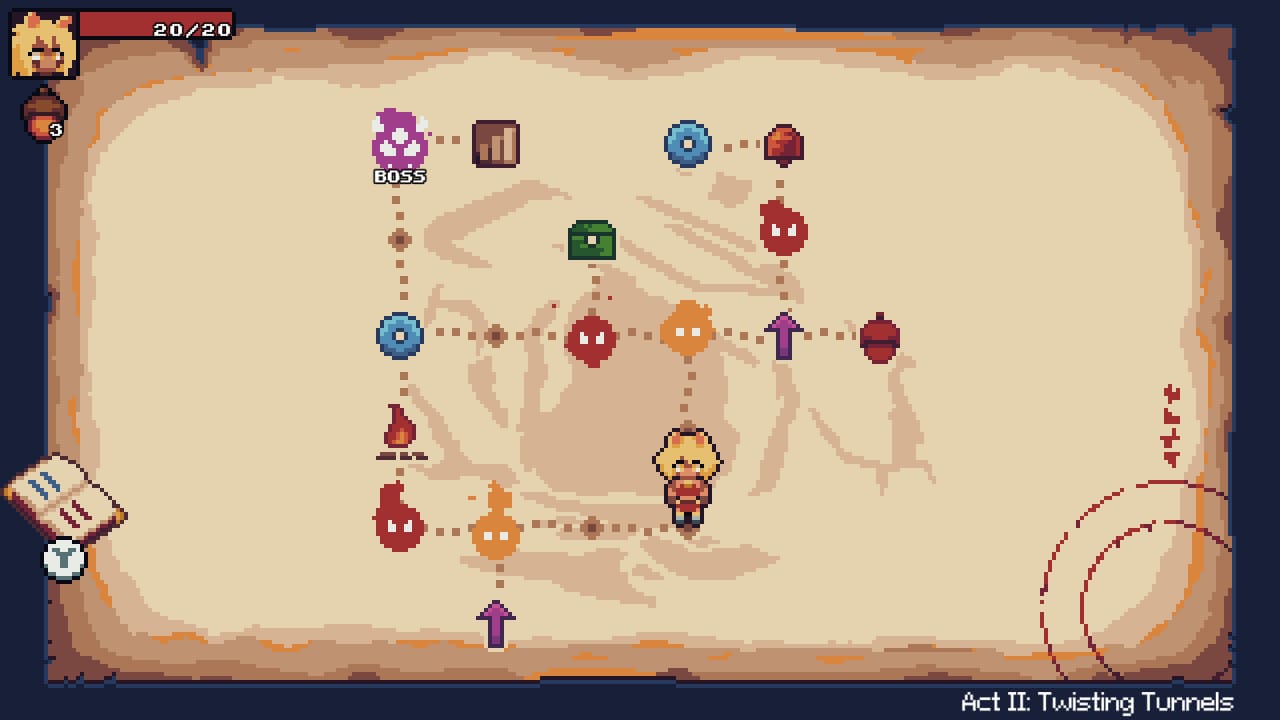
You start with two spells, usually an attack and a defense or combat boost, although you can wield up to six spells if you upgrade your book at blessing spots (and buy/find enough spells, of course). Capping you at six means that you can build the perfect “engine”, as roguelike experts call it, to set everything in motion with a simple line of spells. You’re still building a deck, but within constraints that suit the game.
Most spells draw from the default five stones but some have clear stones, meaning that you can use any stone in that slot, or special stones that some spells or potions add in later acts. There are six playable characters with their own specialties, three of which you’ll unlock through regular play and three that you get hints for unlocking the more you see (the latter three were completely secret when the game first launched, but few people managed to find them). Aerfen for example adds a lot of Knife stones to the board with her spells, which deal damage to enemies when cast but aren’t in a lot of spell sequences.
A lot has changed since I spent 15 hours playing the PC version back in Autumn 2024, before uninstalling it so I could be productive again. Potions, the shopkeepers other than Pwca and all of the story dialogue written by npckc are all additions that have come in through updates since launch. Developer Alexander Taylor has been upfront about all of these changes in devlogs and a postmortem that I’d recommend you read if you’re curious what post-launch can look like.

After you first beat three bosses, something I managed in my first hour, you unlock Modifiers. These alter the game in various ways, such as adding a time limit or making you automatically heal after each battle. They also allow you to see the fourth and final act of the game to truly beat it as each character if your rank is “+2” from less helpful modifiers. This makes each run unique and forces you to decide what sacrifices you will make to get to the true end of a run. The daily challenge mode picks out spells and modifiers at random to give you runs you might not set up yourself, too.
I do have a couple of complaints based off of this pre-release build. First, the lack of touchscreen support is disappointing. Even if it may be difficult to connect the stones that way, being able to click on any point on the map and watch my character go there on PC was a convenient highlight. Also the game only saves when you enter battles, so quitting when it isn’t going well lets you rewind back to the start of a battle, but this also means that when I lost a run and quit the game, I was still able to resume that run from the last auto-save instead of it being wiped away. I reached out to Taylor about this and he assured me that a patch has been submitted.

One other thing I’d like to talk about is the game’s art. Although the key art by Sam Miller drew many people in, Gwen’s box art design reminding me of Popful Mail, I was first interested by the in-game art. No outlines, clear sprites, fun enemy designs and backgrounds that bring the world to life without drowning out the foreground, I was quite taken with it. During development, Taylor shared updates on (now-defunct blogsite) Cohost, including adjusting how much the boobs on a snake enemy bounced. The game is filled with monster girls but their designs never felt lecherous to me, so much as funny. I understand that this could be off-putting to some so I wanted to mention it here anyway. Taylor also calls back to Cohost with their mascot Eggbug as an enemy. It’s as powerful as an Eggbug should be.
Since I first played the demo last summer, I have played close to 50 hours of Witching Stone and that number is only going to climb now I have it on a portable console. I don’t do review scores but this gets my strongest recommendation. Come back tomorrow for an interview with the developer.
Witching Stone is a roguelike deck-builder puzzler available now on Nintendo Switch and PC via Itch and Steam. It was developed and published by Alexander Taylor with music by Noelle Aman, key art by Sam Miller and writing by npckc. If you’d like to support me, you can subscribe on Patreon for articles one day early or make a one time donation through Ko-Fi.

